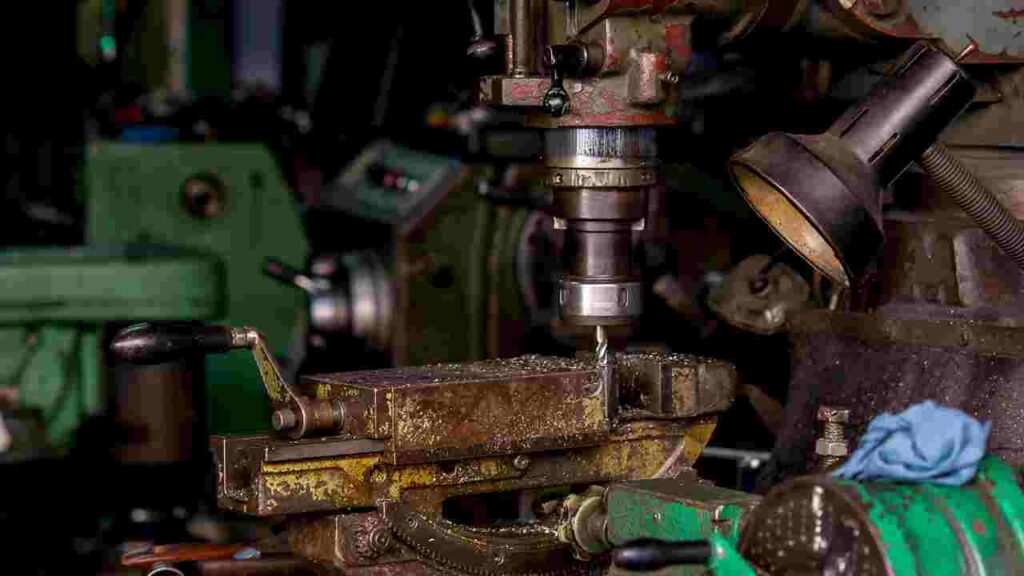
An unseen hero in the workshop, the drill press table-raising mechanism, though often overlooked, is a crucial component of any successful project. That small cog in the wheel adjusts, aligns, and maintains precision in all our drilling endeavors.
Let’s explore this essential piece of machinery – understanding its intricacies, appreciating its contribution to accurate drilling, and, ultimately, learning how to care for and maintain it to ensure peak performance at all times.
Get ready to dive into the nuts and bolts of the drill press table raising mechanism!
Drill Press Table Raising Mechanism:
The drill press table raising mechanism is a vital part of any drill press setup, and it’s key to the success of your drilling projects. It’s what gives you the power to control the vertical positioning of the table, allowing you to accommodate workpieces of various sizes and perform precise, accurate drilling operations.
At the heart of the drill press table raising mechanism is a key component known as the rack and pinion system. A linear gear (rack) and a circular gear (pinion) interact to enable vertical motion.
As you turn the crank handle attached to the pinion gear, the gear moves along the teeth of the rack, which is attached to the drill press table. This motion moves the table up or down, depending on how you turn the handle.
Some advanced drill presses may feature hydraulic or electronic raising mechanisms, which operate at the push of a button. Despite the differences in operation, the principle remains the same: a controlled method to adjust the height of the drill press table, matching the size of your workpiece and the specifics of your drilling task.
The beauty of the drill press table raising mechanism lies not just in its function but also in its simplicity. The mechanism is a symphony of gears and levers working together to provide precise, easy-to-control movement. Understanding this crucial component allows you to make the most of your drill press and elevate your craft to the next level.
Whether you are a DIY hobbyist or a professional woodworker, mastering the table-raising mechanism allows you to expand your skill set and improve your work’s accuracy and efficiency.
Different Types of Drill Press Table Raising Mechanisms:
Though the drill press table raising mechanism may seem straightforward, it’s important to understand that not all systems are created equal. Depending on your drill press’s design, features, and quality, you might find yourself working with one of several types of raising mechanisms.
1. Manual Crank Mechanism:
The most common type found in drill presses, the manual crank mechanism operates based on the rack and pinion system, as discussed earlier. It requires the physical turning of the crank to adjust the table height. It’s a cost-effective and reliable option suitable for both hobbyists and professionals.
2. Hydraulic Mechanism:
Found in some high-end drill presses, hydraulic mechanisms allow for smooth and effortless table adjustment. They use hydraulic fluid to transfer force from one point to another, reducing the amount of physical effort needed. These systems are more expensive but offer high precision and are ideal for heavy-duty or commercial use.
3. Electric Mechanism:
These are less common and found in advanced drill presses. The table height is adjusted using an electric motor which controls the movement of the table via a series of gears. These mechanisms offer effortless adjustments and high precision but also have a higher price tag.
4. Lead Screw Mechanism:
Some drill presses use a lead screw mechanism, a combination of a screw and a nut, where the nut is integrated with the table. When the screw is rotated, the table moves along the screw threads. This mechanism is simple, reliable, and capable of high precision.
Common Issues and Troubleshooting Tips
Even the most robust drill press table-raising mechanisms can run into problems. By understanding these issues and troubleshooting them, you can ensure your drill press runs smoothly and efficiently.
- Difficulty Raising or Lowering the Table: If your drill press table is hard to move, it might be due to the lack of lubrication or a buildup of dust and debris in the gear mechanism. Regularly clean the rack, pinion, or lead screw and apply a suitable lubricant.
- Slipping Table: If the table slips or fails to hold its position while drilling, this could be due to a loose locking mechanism or worn-out gears. Make sure to check and tighten the table lock. If the gears are worn, consider replacing them.
- Uneven Movement: If the table doesn’t move evenly, it might be a sign of worn-out or damaged gears in the mechanism. Inspect the gears for signs of wear and replace them if necessary.
- Excessive Noise: If your table-raising mechanism is making more noise than usual, this could indicate a lack of lubrication or a mechanical issue. Lubricate the mechanism, and if the noise persists, inspect for damage.
Safety Tip:
Unplug your drill press before troubleshooting or maintenance tasks. Always follow the manufacturer’s instructions when handling your equipment.
Conclusion:
The drill press table raising mechanism isn’t just a component of your workshop toolset – it’s an essential partner ensuring your projects’ precision and efficiency. Whether using a manual crank, a hydraulic system, or an advanced electric mechanism, understanding and maintaining this critical aspect of your drill press can take your craftsmanship to the next level.
So, let’s show our unsung workshop hero some love by knowing it better and caring for it regularly. Keep drilling, keep learning, and remember, a well-maintained mechanism leads to well-executed projects!
- Delta Rockwell Drill Press 15 017: Your Ultimate Workshop Tool - August 21, 2023
- Rockwell 32 Radial Drill Press: The Ultimate Workshop Tool - August 21, 2023
- Best Drill Press for 80 Lower: Expert Advice and Top Picks - August 21, 2023






